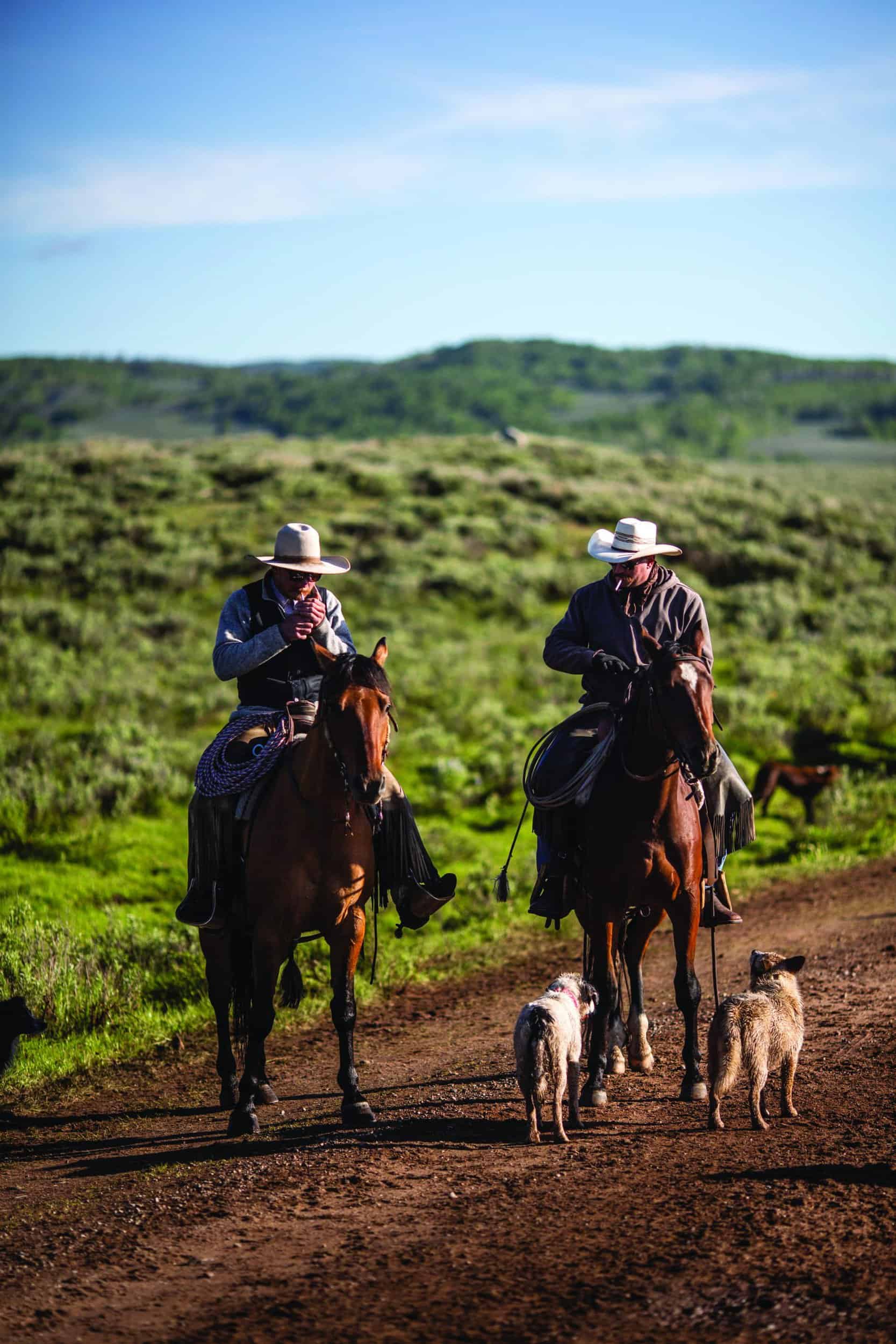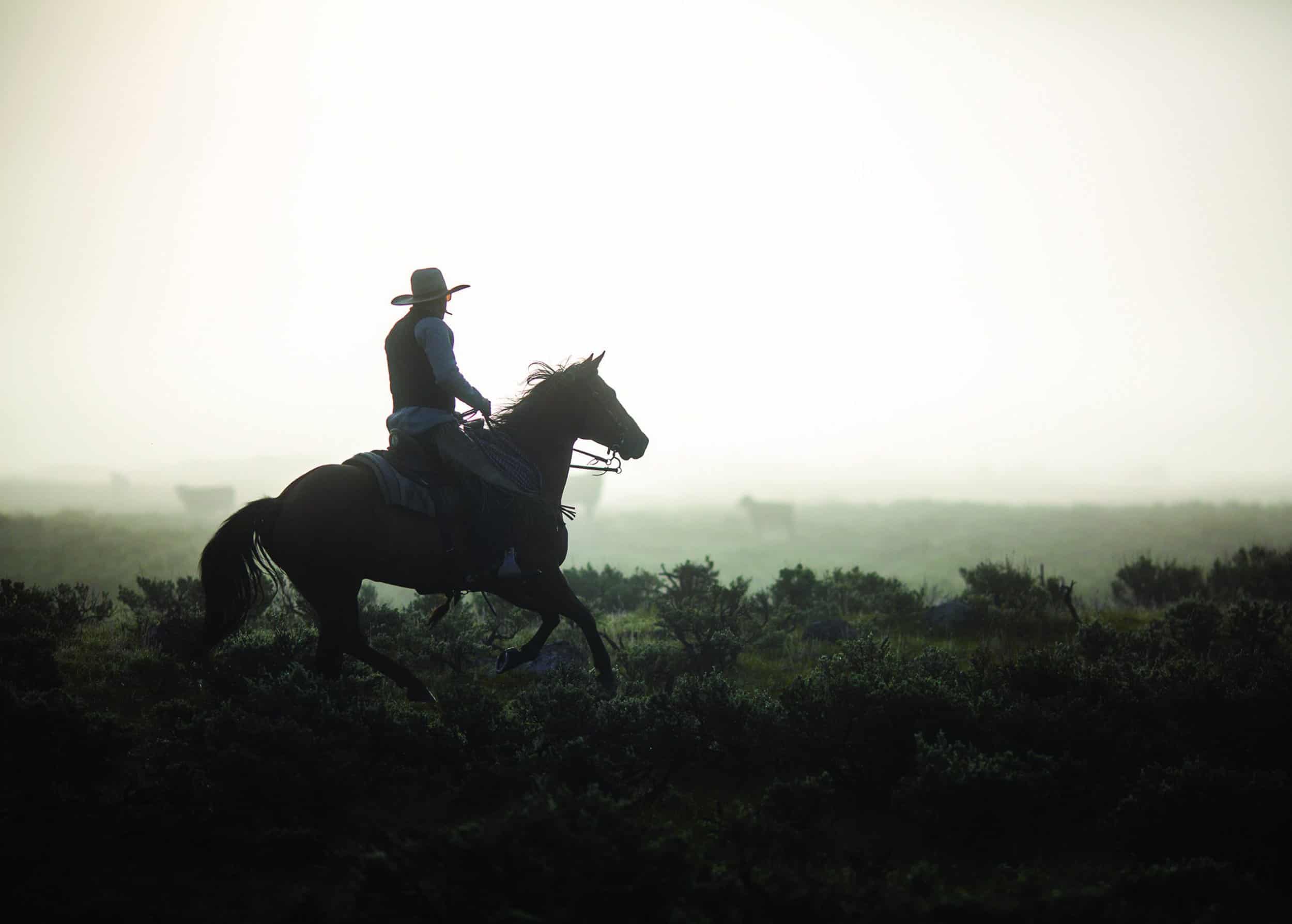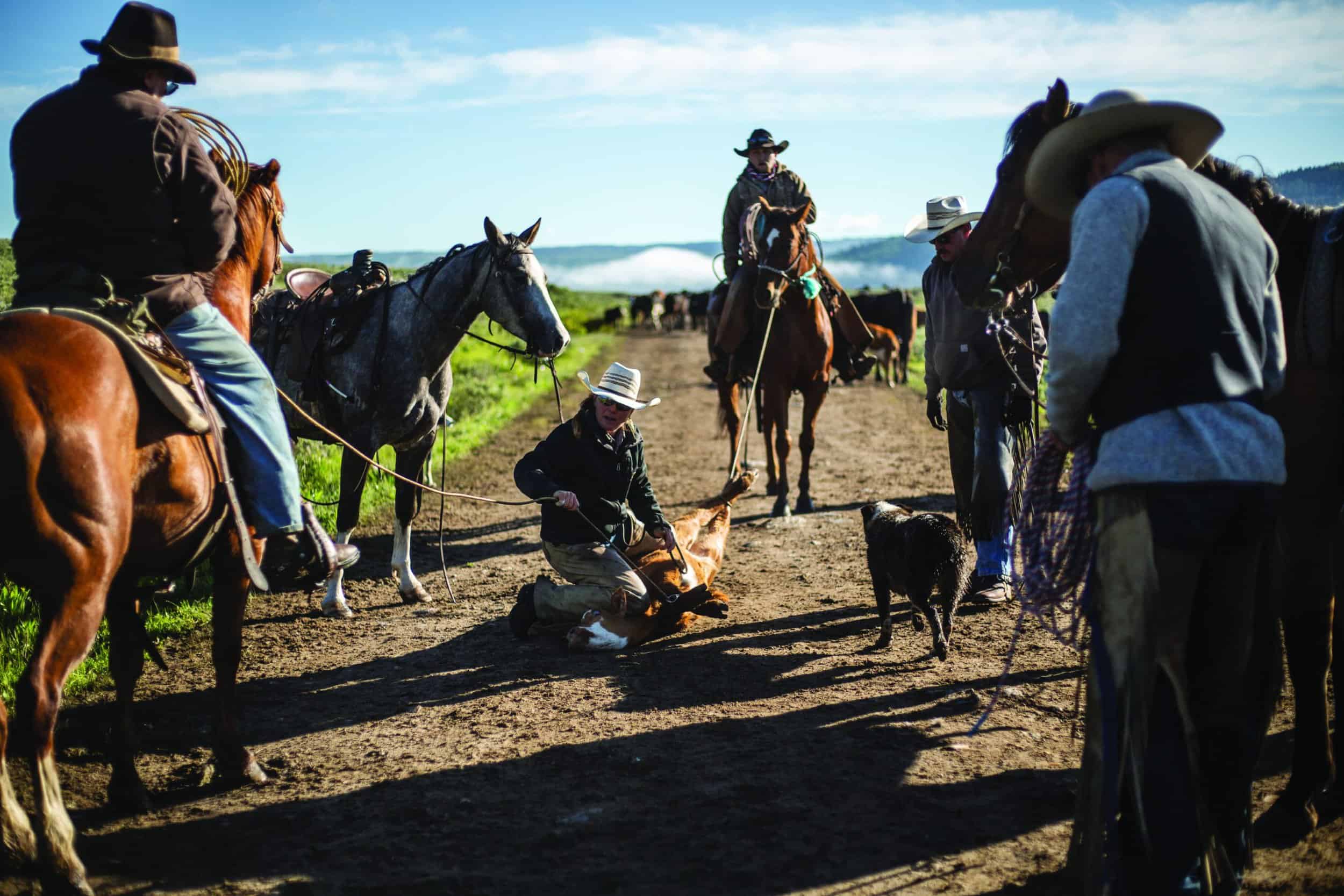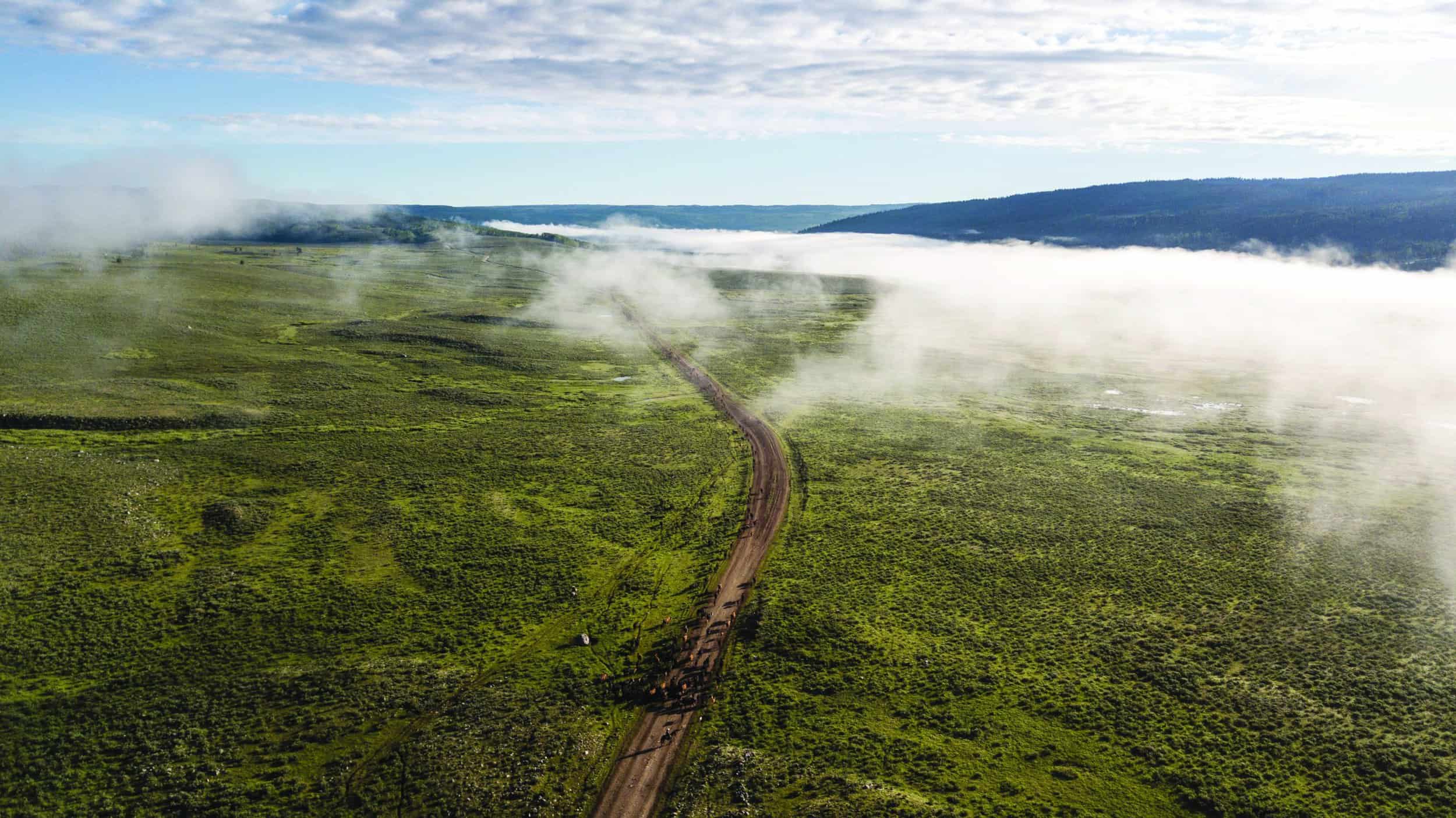Read The
Current Issue
Thousands of Sublette County cattle spend their summer grazing the Upper Green River high country, and cowboys still drive them nearly sixty miles to get there.
// By Mike Koshmrl // Photography by ryan dorgan
It’s 8 a.m. on an early-summer morning, and Albert Sommers and three of his riders are sauntering north, pushing a dozen cows—each with a calf—down Highway 352 pointed toward Green River Lakes. A handful of agile herding dogs bounce around accompanying the cattle-driving cowboys, and they’re doing most of the work. Although it’s still early, the humans, canines, and bovids have been up for hours. They’ve pushed past the Whiskey Grove campground and are now nearing the endpoint for the day: The Kendall Bridge. Up ahead, Coke Landers and his riders lead the strung-out cattle, and, as they clatter across the bridge, he keeps pressing them upriver. Sommers watches from a distance and interjects. “Coke!” he shouts out. “Call them off! This is as far as we’re going.”
A third-generation Upper Green rancher, Sommers has been doing this work since he was ten years old. On this late-June morning, the now sixty-one-year-old cattleman’s voice is raspy. He jokes, and hopes, that it isn’t Covid-19. The cowboys up ahead can’t quite make out the instructions amid the bustle and moos, and so Landers circles back. “We’re going to have to get you a megaphone,” he tells Sommers.
This is the Green River Drift. The name comes from what happens at the tail end of summer. Come October, thousands of cows—by this time with older, larger calves—will “drift” back down from the snowy high country toward the Green River basin’s vast sagebrush-steppe bottoms. Getting them up there, however, takes an orchestrated old-fashioned cattle drive that spans fifty-eight miles and takes two weeks to complete. Sommers’s grandfather, who came to Wyoming as a teacher, helped start this springtime ritual in 1896. By 1916, the ranching families whose cattle made the trek formed an association at the urging of the Bonneville National Forest (today, it’s the Bridger-Teton National Forest, BTNF).
The drive’s history is well documented, and, in 2013 the Green River Drift was designated as “traditional, cultural property” under the National Register of Historic Places. That listing recognizes the entirety of the path, ranging from pinch points that are just fifty-feet wide to stretches that are more than one mile wide. Also included in the designation are “two-track” trails, gravel county roads, stock driveways and trails, highway underpasses, fences, and bridges. The backdrop of the Drift, which largely follows the Green and New Fork rivers, is stunning—the Wind River Mountains dominate the view to the north and east, while the more-distant Wyoming Range cuts across the western sky.
Eleven ranches now represent the Upper Green River Cattlemen’s Association, a collective that pools resources and divvies up costs in order to manage the Bridger-Teton grazing allotments where the cattle fatten up for the summer. Altogether, they’re permitted to drive and graze 6,700 cow-calf pairs, though Sommers says they usually fall well short of this mark. While the families’ livestock mix together out on the open range and during the fall drift, on the drive north they’re still separated on a ranch-by-ranch basis.
Landers, the ranch manager for the Murdock Cattle Company, is in charge of 491 cows and yearlings—plus a couple hundred calves that don’t factor into the count. Each animal sports a distinct brand, plus a green tag clipped through its left ear. Although many of the drift’s traditions are intact, ranchers have adapted to the times. Landers’s youngest cows and calves, for example, get to enjoy the historic corridor from the comfort of a livestock trailer. “I haul them up with trucks,” he says. “Just because it’s a seventy-mile drive, and for their first year being a mom and having a calf, I’ve found it’s easier to haul them up here instead of making them walk the whole way.” As Landers speaks, cows moo to try to find their calves and four-wheelers buzz around. RVs and tents are parked and staked along the Green River, their inhabitants waiting out the morning’s cattle-filled commotion. Nearby, Landers’s three young daughters play, reveling in the completion of a day of the Green River Drift. “Got the whole family here today,” Landers says. “It’s Father’s Day, but this is fairly standard.”
The best time to see the domestic bovids on the go is in mid-June, when they’re visible along Wyoming Highways 352 and 191. They come back into view again in the early fall, typically late September and into the first half of October.












